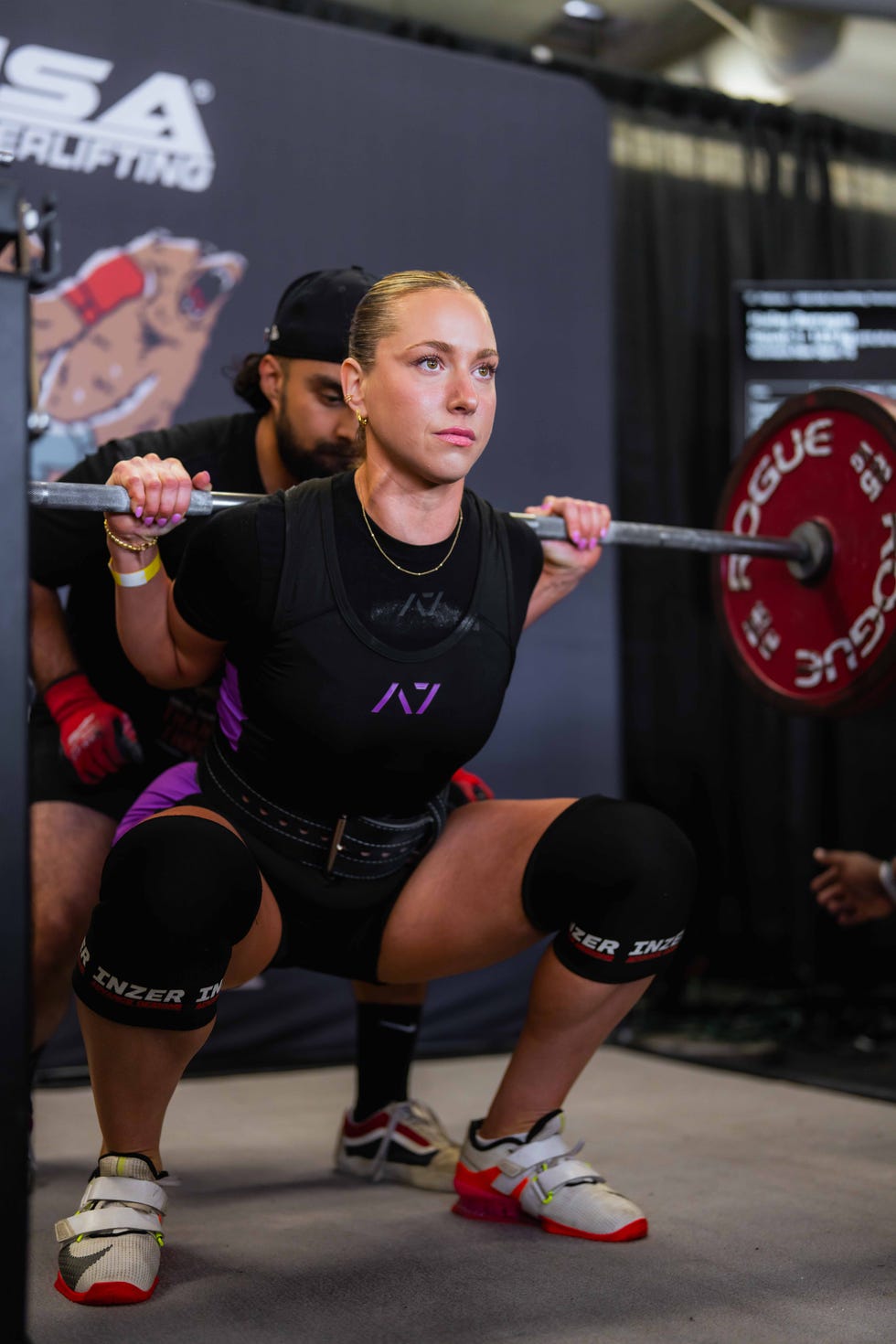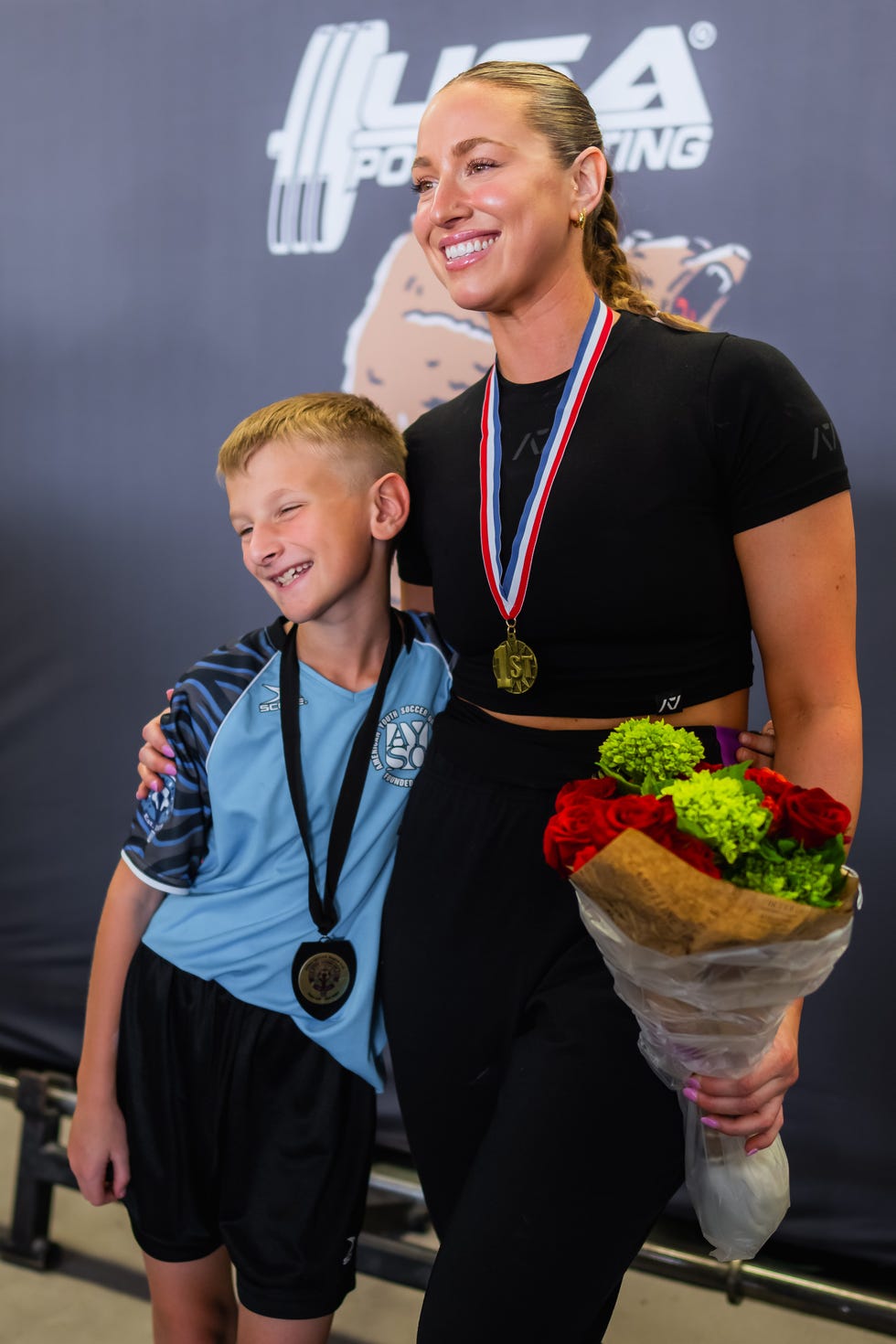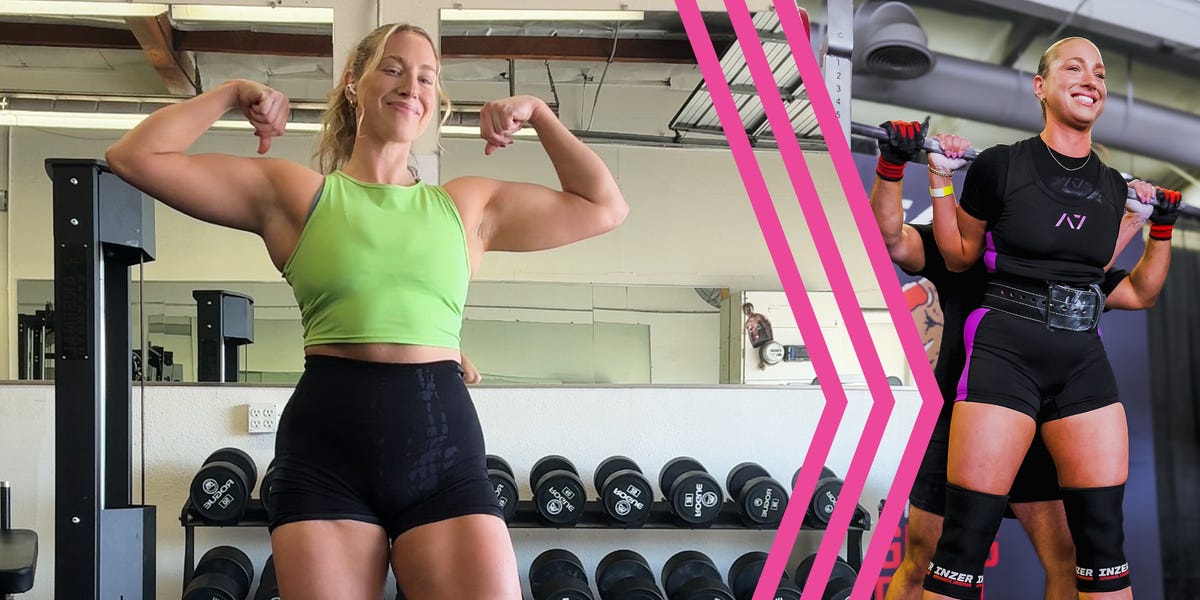I was a competitive athlete through high school and loved the discipline that came with it. But when I turned 19, I quit all sports to focus on my mental health. I struggled with severe anxiety and depression, and wasn’t in the headspace to show up for practice. Almost immediately, I lost my strength, routine, and community.
Then, at 23, I got pregnant. I gained nearly 14kg during pregnancy, and once my son was born, my weight continued to creep up. I craved a healthy change.
Initially, my only goal was to lose weight. I was depressed and uncomfortable in my body and thought shrinking myself to a smaller size was the key to happiness. I had never stepped foot in a gym, and was a single mom without childcare, so I Googled the best at-home workouts to burn the most calories. For the next six months, I jumped around my living room and tried every HIIT workout under the sun.
What came next, changed my relationship with fitness – and life -forever.
After my brother inspired me to work with a personal trainer, I finally gave lifting weights a try
During my first workout, my trainer told me to squat a 20kg barbell. I laughed, because I thought there was no way I was capable. I had zero confidence and was full of self-doubt, but I nervously gave it a try and…it was easy. At that moment, my confidence skyrocketed, and I realised I had been seriously limiting myself. For years, my default was to assume, ‘I can’t.’ And now, I realised I could.
I continued working with this trainer twice a week for the next year. During each hour-long session, we focused on nailing form and progressive overload for three basic movement patterns: squat, bench press, and deadlift. Slowly but surely, I got stronger and began losing weight. Still, I was craving more.
Related StoriesI loved lifting heavy weights and got curious about powerlifting
Powerlifting is about lifting the heaviest weight possible in the three barbell lifts (back squat, bench press, and deadlift) with good form, so I found an experienced coach to train with in preparation to compete. Within a week, I noticed an immediate mental shift. Instead of wanting to be the smallest version of myself, I found myself wanting to be the strongest version.
Instead of setting goals based on the scale, I set goals on how heavy I wanted to lift. I was no longer focused on aesthetics – I was focused on performance.
 Original Photo Credit: Harison Troung
Original Photo Credit: Harison Troung
Hailey squatting at a powerlifting meet in 2023.
 Now, I powerlift three days a week and focus on muscle hypertrophy
Now, I powerlift three days a week and focus on muscle hypertrophy
These days, my workouts are typically two hours long and contain five to six moves per session. Monday is my primary squat day, so I train back squats and belt squats. The number of reps and sets varies depending on the training block – in my current block, I’m doing four sets of three to four reps per exercise for squats (same for bench presses and deadlifts). That lower rep range is intentional, since my goal for those compound moves is to build strength rather than hypertrophy. Post-squatting, I do bench presses and lower back exercises. Since I focus on hypertrophy with all of my accessory exercises each day, I do three sets of eight to 12 reps for all of those.
Wednesday is my primary deadlift day, and I typically do five sets of two reps per exercise. I also train bench press (again) and work in leg extensions and hamstring curls. Friday is another squat day, but during this session I focus on volume (meaning more reps, slightly lower weight). Afterward, I bench press again before closing the session with triceps and shoulders.
On top of that, I go for a 30-minute walk every day and do plenty of mobility work to increase my range of motion. I also regularly practice single-leg exercises to challenge my stability and address muscular imbalances.
Lower body is my favourite to train, and I especially love squatting. Now, I can squat 143kg, which I’m so proud of, considering I once imagined a 20kg squat impossible.
Related Stories
I used to view carbs as the enemy, but once I started lifting heavy weights, I realised they’re fuel. Instead of thinking, ‘How little can I eat to lose weight?’ my new approach was, ‘How much can I eat to get stronger and support my gains?’
At the beginning of my journey, I counted macros to understand nutritional value and portion size, but now, I eat intuitively. I focus on a high-protein diet paired with lots of complex carbs and healthy fats. I aim for at least 140 grams of protein per day to support my training, and love lean meat, eggs, and cottage cheese.
That said, I prioritise balance and allow myself to enjoy life. If I want dessert, I have it. I no longer restrict myself and I’ve found what works for me.
These 3 factors were key to my strength transformation success1. I found a supportive coach who believed in my ability
Even though I’m now a certified personal trainer myself, I’ll always rely on a coach for my own training. I’m a very emotional person, tend to make decisions based on emotions, so I need a reliable coach who can make objective calls and keep things real. I still have my bouts with self-doubt, but my coach is always there to remind me that I’m capable and strong.
2. I accepted that recovery is necessary for success
To stay feeling my best, I prioritise nine to 10 hours of sleep every night. My body and mind need rest in order to recharge, recover, and perform its best, so I give it just that. I also honour my days off. Getting stronger doesn’t mean pushing your limits every single day. It’s about sticking to an intentional routine, managing fatigue, and treating your body with care, respect, and rest.
3. I learned that strength is the key to confidence
I used to think that being skinny equated to being confident, but now, that couldn’t be further from my truth. I no longer want to be small. At 34, I want to take up space and be the strongest version of myself. Strength training gave me the confidence I never knew I could have, because I learned if I could lift heavy weights and physically and mentally push myself in the gym, I could do anything.
 Original Photo Credit: Harison Troung
Original Photo Credit: Harison Troung
Hailey with her son after competing in a powerlifting competition, 2023.
Cut through the noise and get practical, expert advice, home workouts, easy nutrition and more direct to your inbox. Sign up to the WOMEN’S HEALTH NEWSLETTER
Related Stories
